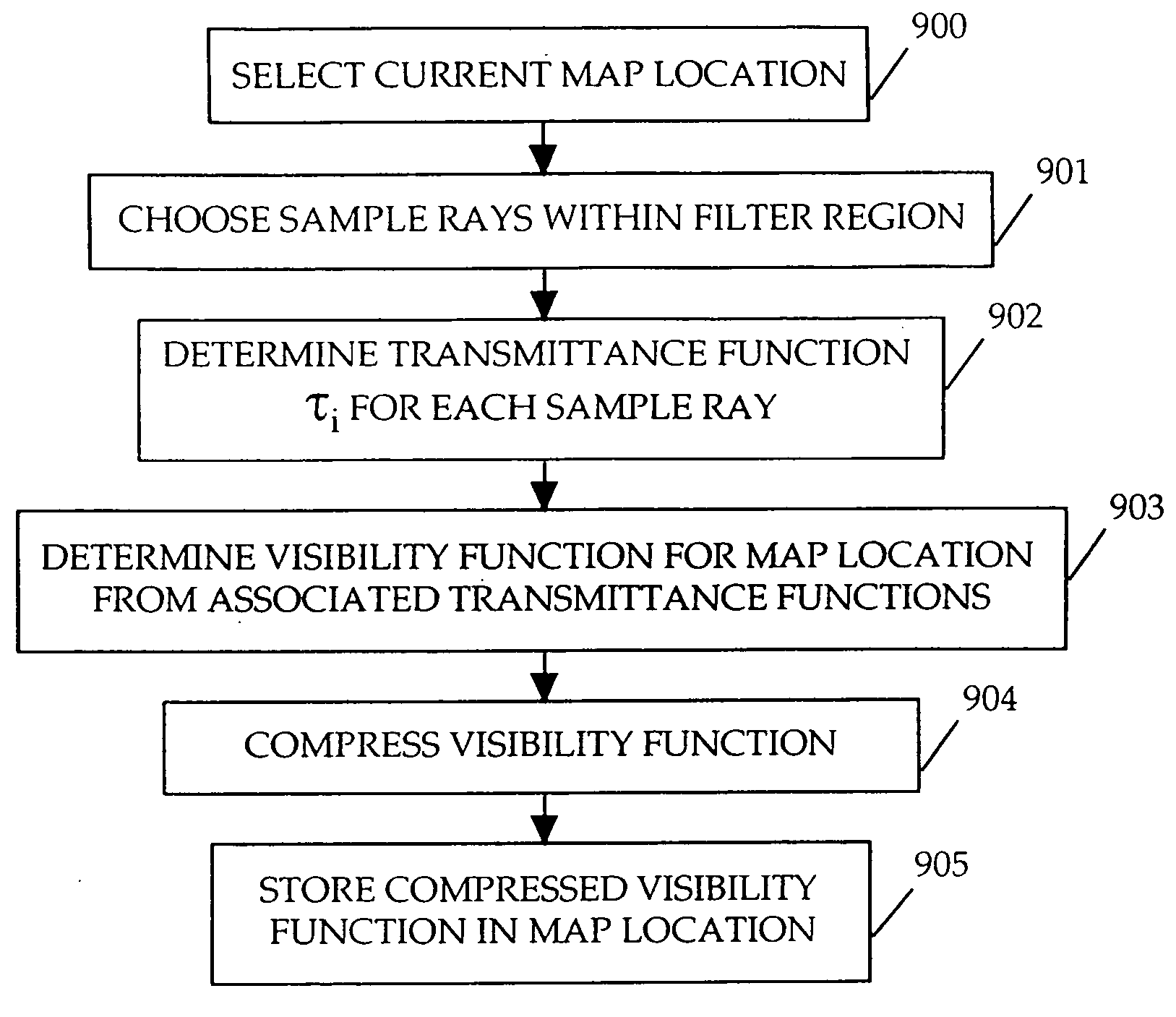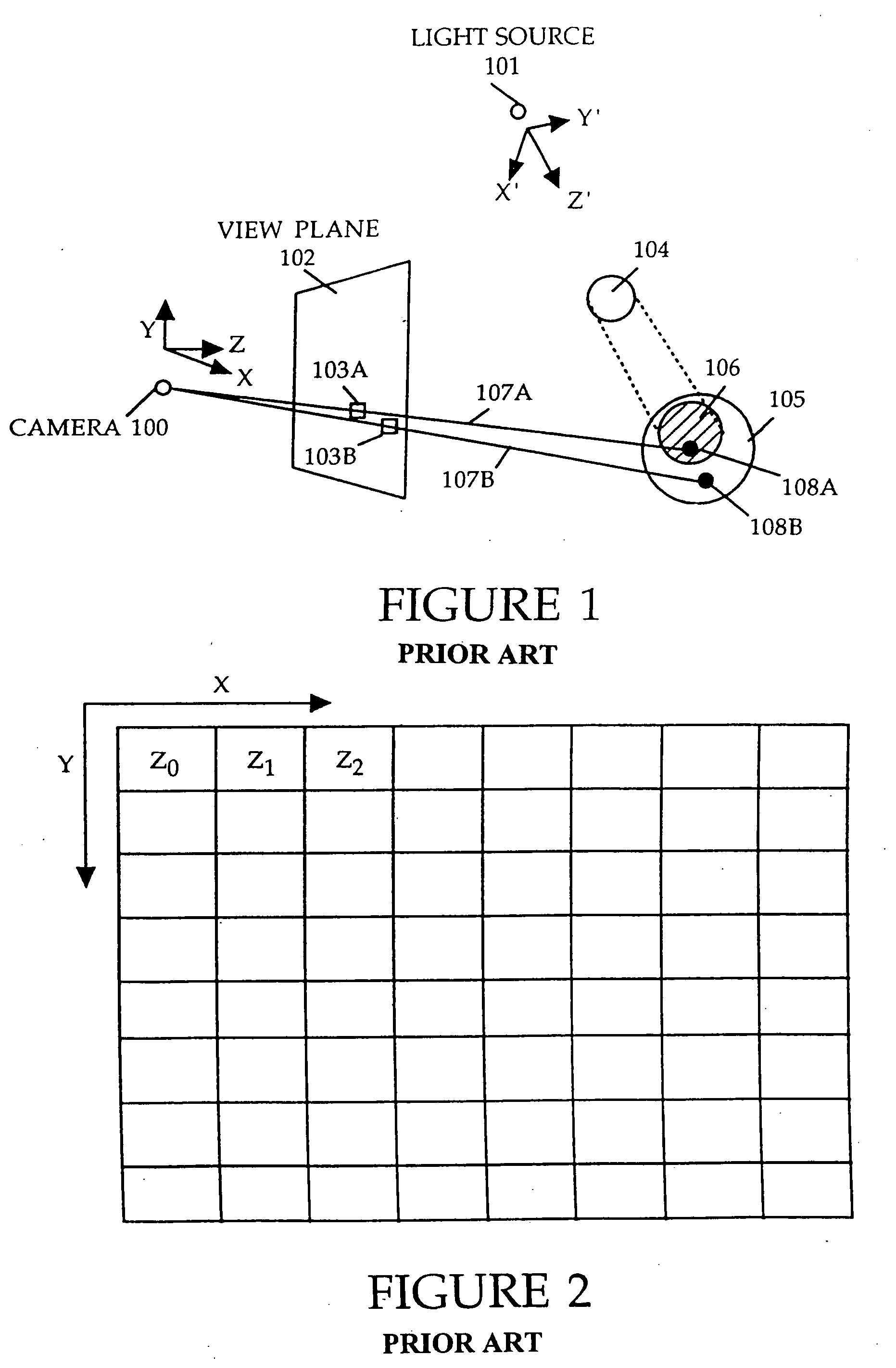Method and apparatus for rendering shadows
a shadow and shadow technology, applied in the field of computer graphics, can solve the problems of insufficient support for fine detail rendering of typical shadow rendering techniques, such as fur or hair, and inability to accurately represent shadows from semi-transparent surfaces and or semi-transparent surfaces or volumes, such as fog or smoke, and achieve the effect of improving data access and improving memory performan
- Summary
- Abstract
- Description
- Claims
- Application Information
AI Technical Summary
Benefits of technology
Problems solved by technology
Method used
Image
Examples
Embodiment Construction
[0064] The invention is a method and apparatus for rendering shadows. In the following description, numerous specific details are set forth to provide a more thorough description of embodiments of the invention. It will be apparent, however, to one skilled in the art, that the invention may be practiced without these specific details. In other instances, well known features have not been described in detail so as not to obscure the invention.
[0065] In this specification, “map location” is used interchangeably with “pixel” to mean an element of any shape or form in the image that is in consideration.
Deep Shadow Map Overview
[0066] Embodiments of the invention employ a new form of shadow map, referred to herein as a “deep shadow map,” to provide greater flexibility and realism in the rendering of shadows. As opposed to shadow maps of the prior art that treat shadows in a binary manner (i.e., a surface is either lit or unlit) based on a single stored depth value, deep shadow maps pe...
PUM
 Login to View More
Login to View More Abstract
Description
Claims
Application Information
 Login to View More
Login to View More - R&D
- Intellectual Property
- Life Sciences
- Materials
- Tech Scout
- Unparalleled Data Quality
- Higher Quality Content
- 60% Fewer Hallucinations
Browse by: Latest US Patents, China's latest patents, Technical Efficacy Thesaurus, Application Domain, Technology Topic, Popular Technical Reports.
© 2025 PatSnap. All rights reserved.Legal|Privacy policy|Modern Slavery Act Transparency Statement|Sitemap|About US| Contact US: help@patsnap.com



